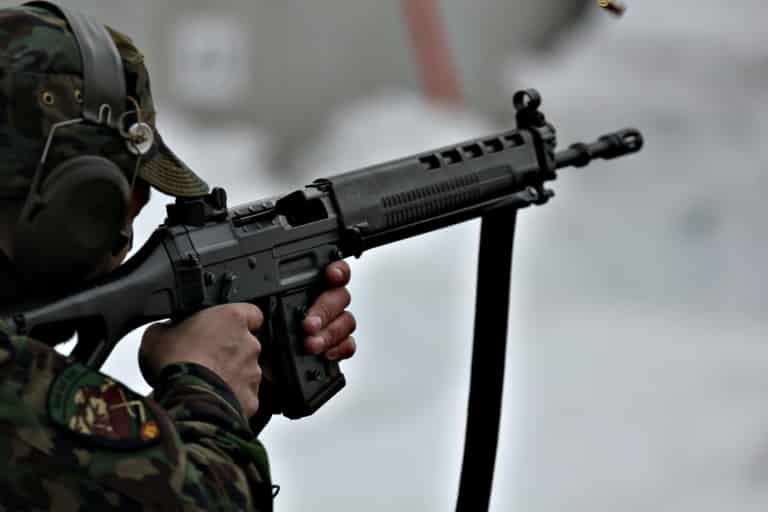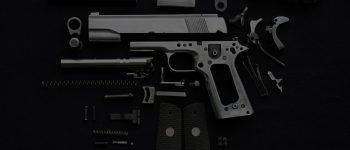Insider Tips > Muzzle Threading
Muzzle Threading
To ensure thread/bore concentricity, the barrel threading must be done on a lathe, with the bore centered as if the barrel was to be re-crowned.
Skip Walters

Many shooters are interested in having the muzzles threaded on their firearms, for a variety of different reasons. They may wish to add a flash hider to reduce the identification of the shooter’s location if the application is military or police. A compensator could be added to reduce recoil and “muzzle flip.” This increases accuracy and decreases acquisition time for follow-up shots. The muzzle can also be threaded to add a noise suppressor. Noise suppressors are used to protect the shooter’s hearing, as well as those in the vicinity. In the USA, the noise suppressor has been demonized by Hollywood and the anti-gun crowd with the more nefarious term of “silencer.” This is an extremely misleading term. A hyper-sonic projectile is impossible to silence unless it has been fired in a vacuum, such as in outer space.
The Europeans have been threading muzzles for well over 50 years. This has been prevalent in Europe because of the auditory damage incurred with high decibel levels. Noise suppressors are required when hunting or on indoor or outdoor shooting ranges in many European countries. As with automobile exhaust mufflers, noise suppressors should be required to combat noise pollution. That point, logical or not, has a long way to go before the propagandized, misinformed public is ready to accept this truth.
The point that must be stressed, is that the threading of the muzzle MUST be concentric to the bore in all cases! If it s not threaded concentrically, the bullet can strike the inner diameter of the muzzle device and cause damage to the weapon, the device and possibly the shooter and bystanders.
To ensure thread/bore concentricity, the barrel threading must be done on a lathe, with the bore centered as if the barrel was to be re-crowned. Bores seldom, if ever, are located “dead center” in a barrel. After manufacture, barrels are polished, to remove marks prior to finishing, so slight variations of the bore from center are inevitable. The difference in concentricity is usually dramatic when shotgun barrels have been shortened. This situation, though not as pronounced, applies to rifled barrels too.
In summary, never just cut threads on the periphery of the barrel. Make a “truing” cut on the outside to establish the major thread diameter, but ALWAYS center the bore in the lathe first!




